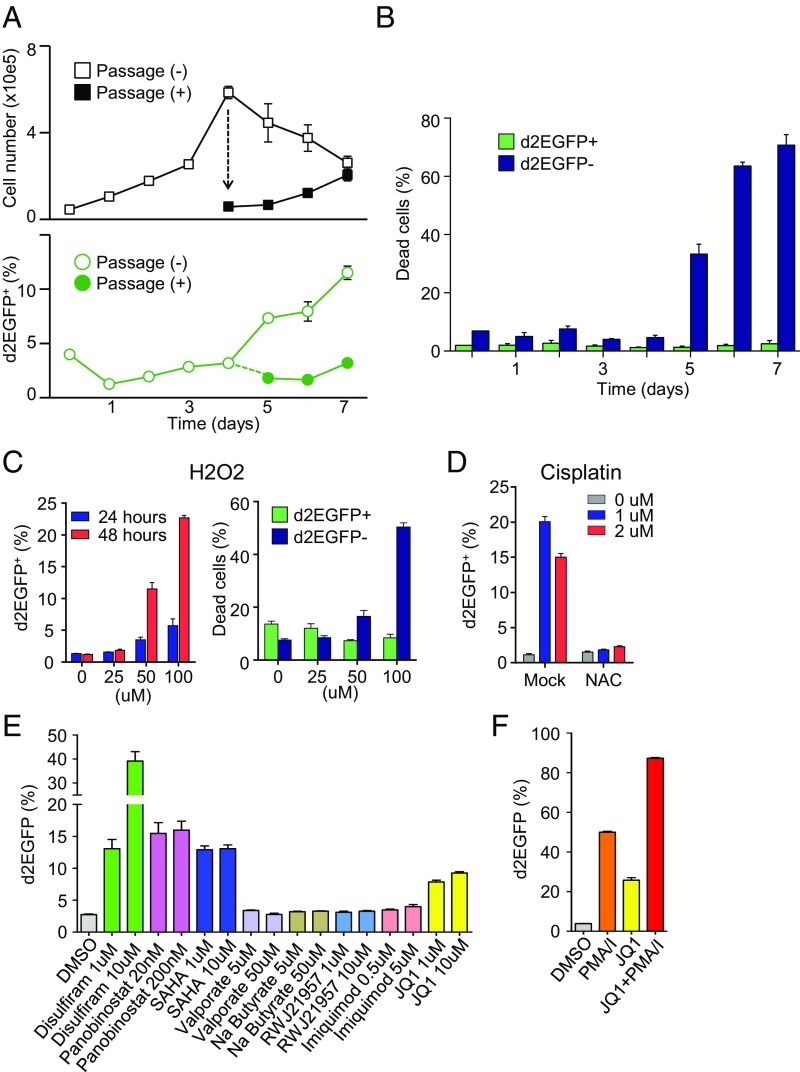Fig. 3.
Induction of Tax in MT1GFP cells by cytotoxic stresses and HIV-reactivating reagents. (A) Effect of cellular overgrowth on Tax expression. On day 4, cells were either passaged or allowed to overgrow. Upper shows cell count, and Lower shows percentage of cells that are d2EGFP+ (Tax+). (B) Effect of cellular overgrowth on cell viability in d2EGFP+ (Tax+) and d2EGFP− (Tax−) cells. Viability is measured by LIVE/DEAD staining. (C) Induction of Tax expression by H2O2 treatment. (Left) Percentage of cells that are d2EGFP+ (Tax+); (Right) viability (LIVE/DEAD staining) of d2EGFP+ (Tax+) and d2EGFP− (Tax−) cells after 48 h. (D) Induction of Tax expression by cisplatin treatment is reversed by the antioxidant NAC. (E and F) Effect of HIV-reactivating reagents on Tax expression in MT1GFP cells. (E) The effect of HIV-reactivating reagents on Tax expression. MT1GFP cells were treated for 18 h with the indicated drugs that have been previously reported to reactivate HIV expression. (F) The effect of a combination of JQ-1 and PMA/I on Tax expression. The percentage of cells that are d2EGFP+ was measured by flow cytometry. Each figure is a representative of two independent experiments. Error bars show SDs for three replicates in one experiment.

